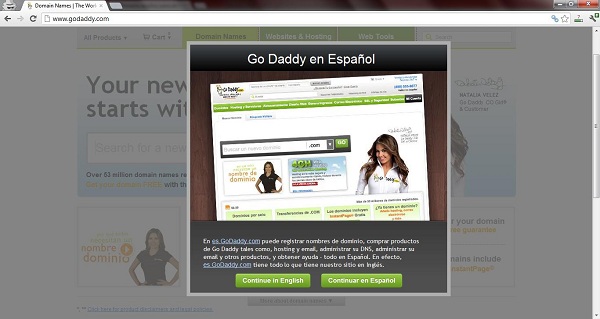Hi guys! We’re “under construction” with a new design and brand. Rather than letting the blog go quiet for a few more weeks with all hands on deck, we invited some of the industry’s best and brightest experts to guest post.
 Without further ado, please welcome Zeph Snapp from Not Just SEO. He’s super talented, multilingual and has some very important international SEO advice to share.
Without further ado, please welcome Zeph Snapp from Not Just SEO. He’s super talented, multilingual and has some very important international SEO advice to share.
Having an international website ought to be a priority for almost every organization. With the US economy stalling, and emerging markets living up to their title, targeting international website visitors can be an excellent way to grow your business in tough economic times. Many of you have probably seen your international traffic rise over the past year (go take a look, I can wait), and since international internet usage will quadruple by 2015, figuring out ways to make us foreigners feel good about your website is going to be an excellent investment.
1) Go Mobile
Optimizing your website for mobile browsing is a huge part of setting your website up for international success, especially for B2C and e-Commerce sites. According to the IDC mobile device browsing will overtake PC’s somewhere between 2014 and 2016. Even if this were not the case, International SEO is in large part aimed at emerging markets.
Mobile devices are cheaper than PC’s and laptops. For consumers in countries where the average income is less than $15,000 a year, spending 7% of their income on a laptop is not reasonable. Devices are much cheaper as a rule, so the barrier to entry drops.
As a rule, B2C organizations should generally place a higher priority on mobile than B2B, but it is still important for all organizations. For my B2B clients who target Latin America, mobile traffic represents over 10% of their traffic right now, and has been increasing at a steady clip over the past 18 months.
Of course mobile devices are also getting better at reading websites as they were intended to be seen, so be careful about leaving out too much functionality. Google has come out in favor of responsive web design for SEO, so that is what we suggest as well. If you are an SMB you can get a responsive design Word Press theme for free! For large organizations, having your programming and design team learn about responsive design is a great investment.
2) Detect the Language
The most accepted way for a global website to handle this is to use an IP sniffer that will detect what country the visitor is from and automatically send them to the correct version of the website. However, you always need to be sensitive to the fact that there could be extenuating circumstances. For example, I live and work in Mexico, but prefer English language, especially when booking trips. The IP sniffer automatically sends me to the Mexican version of the website. Normally this would be a source of frustration. But Expedia.mx does this:

I’m instantly given the choice, and now it is up to me.
GoDaddy does something similar, but they do it in a much more overt way:

This feels over the top. Having a pop-up window is an acceptable solution to the problem for many users, but I have a bias against them. For people who have a low tolerance to spam, this can be a deal breaker. The data that Hubspot has collected on pop-ups shows that they are effective, but you still run the risk of alienating some users. Granted, in this case the only action they are asking you to take is to choose a website, but Expedia’s version is far more elegant. While it makes an assumption (that you would prefer to be on the .mx site), they also give you an easy way to get back to the US version.
No matter what you decide, do some testing to ensure that you’ve chosen correctly. It might be that GoDaddy people were not clicking on the Spanish version at all and that is why they decided on the popup.
Some large companies don’t do any IP sniffing. For example Adobe sends you to their English language home page no matter where you are browsing, if you click on their organic results. However if you click on their AdWords result, they send you to the designated country page. Adobe also hides the option to choose to view the site in a different language down in the footer. This makes sense for them because visitors probably want to read the content in English no matter where they are coming from.
However, the majority of businesses should display their language options more prominently. This leads us to…
3) Don’t Use Flags
As a proud Mexican (dual US) citizen, it makes me cringe anytime I see this:
![]()
I know that UX design philosophy states that you should use symbols rather than text whenever possible, but this is not the way. As a US citizen, would how would you like to see this on an international website?

Especially if you were making a purchasing decision it would make you suspicious about the site, and force to investigate further. Or more likely just leave. So why is this ok for companies targeting Latin America?
It’s not.
That doesn’t mean that you have to do something complicated. If you are only going to translate to Spanish (which is where most companies start), then keep things as simple as possible. Best Buy shows how it should work:
![]()
All you need to do is put the language options in the header in simple text. If you have more than two languages, you can make a drop down menu so that users can choose for themselves.
4) Be Sensitive to Language Differences
Language is the tool we use most when interacting with the world, and as such is probably the most important part of any website. The best design, the easiest user interface can be negatively influenced if the language is off message. But the complexity of languages across the globe is tough to get exactly right.
Planning the tone of the language and deciding how you want to address your site visitors is a huge part of a successful international website.
In Japan, verb conjugation depends on the level of person we are addressing, inferior, equal or superior. The level of respect varies for each individual and physical setting. If you are a candy company, it might be fine to write to your users as equals, but if you offer IT services it will be safer to refer to your readers as superior. In fact, not doing so would signal arrogance or unprofessionalism.
In French there are two ways of talking to people that depending on the relationship that you have with them. One is for more formalized situations, like when you meet someone for the first time, talk to someone in a superior position or with employees in a store. It implies respect, but also a distance that might not be the best strategy for your brand. The other is much more informal, used just for friends and family. As a rule, French speakers in Quebec and Africa are more tolerant of informality that those in France.
Spanish has some of the hierarchical speech, but it changes depending on the country. Check out this infographic on how to address Spanish speakers if you are interested in learning more about this issue. Latin America seems like a homogenous region, but there are significant differences in the grammatical rules from country to country.
So, before you attempt a translation of your website, decide on a tone. Do you want to be friendly or formal? The best way to do this is by creating customer personae, and using the resulting models to define the type of copy you want on your foreign language sites. Create a document that clearly and concisely shows the types customers you are seeking.
When interviewing translators (or international SEO agencies), practice reflective listening. This means after you tell them what you want, ask them to summarize what you are looking for from a tone and topic perspective so you can ensure that they understand your prospective customers and goals.
5) Don’t Use Stock Images
It can be tempting to just go to shutterstock.com and purchase some multicultural images of people for your international websites, but resist the temptation. Stock photos signal a less than stellar organization. Because the barrier to entry on the web is so low, there are tons of websites that are created on a daily basis. I haven’t found statistics on this, but empirically the SERP’s in Latin America are filled with websites and business directories that have been abandoned. That is why we tend to trust bigger brands, because we know they have been/will be in business for a long time.
The other problem is that when you purchase stock images there is the inherent risk that someone else has already used it. While doing research we found three different companies who used this image on their homepage:

Don’t do it.
Yes, stock images are much cheaper than a photo shoot, especially on location, but there are other options. Our favorite is to ask the client to take pictures of their employees at work and play, or ask customers to send in photos of themselves with their product. You can even turn it into a marketing initiative (link building, anyone?). Even if the visitor might not feel personally represented, these photos are a more genuine representation of who you are. And internationally this is the most important hurdle you have to climb. Also, with the advent of excellent digital cameras and HD video, it is much cheaper to create unique media than it used to be.
Note: Careful with the Benetton Effect

If you do have the means to do create some new images for your international website, try not to go overboard with the multi-cultural pictures. A picture of a group photo with each face from a different race can make you look like you are trying too hard.
At the end of the day, both you and your international visitors want the same thing: their needs to be met. Chances are if you have been doing so in the US, repeating your success abroad is going to be an interesting new challenge. And if you ever need someone to check out an initial version of your home page, I’m always glad to help!

